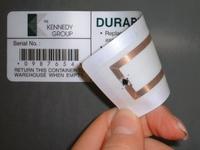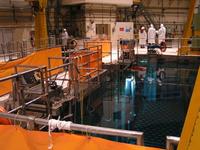-
One million curies of radioactive material safely recovered
Experts at the Los Alamos National Laboratory (LANL) helped the Department of Energy’s (DOE) Off-Site Source Recovery Project (OSRP) recover more than one million curies of radioactive sources since 1999. LANL says that the accomplishment represents a major milestone in protecting our nation and the world from material that could be used in “dirty bombs” by terrorists. “Taking disused, unwanted and, in limited cases, abandoned nuclear materials out of harm’s reach supports the Laboratory’s mission of reducing global nuclear danger,” said Terry Wallace, principal associate director for global security at Los Alamos.
-
-
Industry: Multiple redundant and back-up systems make nuclear plants safer than ever
Nuclear plants receive what supporters of nuclear power regard as an unfair amount of scrutiny and concern for their safety, but industry experts say that plant equipment and plant operations are highly regulated to minimize risks.All U.S. nuclear plants are now storing emergency pumps, generators, battery banks, chargers, compressors, and hoses at off-site locations near the plants to protect against floods, industry insiders say.Working in a nuclear plant is much safer than working in a paper mill or a chemical plant, according to Jim Krafty, a Nuclear Regulatory Commission (NRC) resident senior inspector at the Beaver Valley nuclear power plant in Shippingport, Pennsylvania.
-
-
Turning deadly chemical warfare agents into harmless soil
Destroying chemical warfare agents in bulk is a challenge for the military and international community. Current methods of eradication, such as incineration or hydrolysis, create toxic waste which requires further processing. The logistics required to transport large stockpiles from storage to a disposal site can be risky and expensive. DARPA is seeking portable system that turns stockpiles of chemical warfare agents into dirt or other safe organic compounds without generating hazardous waste.
-
-
U.S. Army seeking to end environmental testing at Indiana nuclear firing range
The U.S. Army wants to end its Nuclear Regulatory Commission (NRC) license at the Jefferson Proving Ground in southern Indiana. The Army’s appeal comes after years of water and soil testing at the site. Currently, an estimated 162,040 pounds of depleted uranium projectiles and shows are still on the firing range. The site was last used in 1995. Uranium munitions, specifically the kind used to penetrate armor during Operation Desert Shield, were used there throughout the 1980s and 1990s.
-
-
The science of airport bomb detection: chromatography
As the holidays draw near, many of us will hop on a plane to visit friends and family — or just get away from it all. Some will be subjected to a swab at the airport to test clothes and baggage for explosives. So how does this process work? The answer is chromatography — a branch of separation chemistry — along with mass spectrometry. Although instrumental chromatography is a mature technology (the first instruments were produced just after WWII), new applications frequently pop up. Some are a matter of scale. Pharmaceutical companies that produce monoclonal antibodies (often used in cancer treatments) make use of capture chromatography to purify their products. On an industrial scale these can be tens of centimeters in diameter and meters in length (typical lab scale systems are a few millimeters diameter and 5-30cm long). Other uses can either be in a specific new application, such as detecting cocaine on bank notes using the gas chromatography systems often seen at airports as bomb and drug detectors.
-
-
NIST study argues for RFID forensic evidence management

Radio frequency identification (RFID) tags— have become increasingly popular for tracking everything from automobiles being manufactured on an assembly line to zoo animals in transit to their new homes. Now, thanks to a new NIST report, the next beneficiaries of RFID technology may soon be law enforcement agencies responsible for the management of forensic evidence. The release notes that the practical question that agencies must consider is whether RFID technology can produce measurable benefits and a positive return on the funds invested in a new system. The NIST report estimates that RFID systems can pay back their initial set-up cost in about two years.
-
-
Improving nuclear power plant safety by looking at nature
Within the nuclear industry, hazardous salt solutions can arise within industrial containment vessels. The salt solution precipitates out, forming structures with strange morphologies that bear a resemblance to stalagmites. If left unchecked, they could build up and cause a problem in the nuclear containment chamber. Currently, these containment chambers are checked regularly to prevent this from happening. Taking inspiration from nature, researchers have created a versatile model to predict how stalagmite-like structures form in nuclear processing plants — as well as how lime scale builds up in kettles.
-
-
Risks of terrorists attacking, or using materials from, a nuclear power plant are low: Experts

Energy analysts who support new nuclear power plants construction insist that the probability of a terrorist nuclear attack by land, sea, or air is extremely low. They reject arguments by nuclear power opponents that terrorist groups may one day attack a nuclear plant, or build an improvised nuclear bomb using materials stolen from a nuclear power plant – and that governments should, therefore, end construction of new nuclear power plants. Climate scientists supporting reduction in CO2 emissions wrote that “There is no credible path to climate stabilization that does not include a substantial role for nuclear power.”
-
-
Washington State supports new Hanford project, but worries about cost
The state of Washington is supporting a new facility which would lessen the load on the Hanford vitrification (vit) plant to process nuclear waste, but has expressed concerns about how the U.S. Department of Energy (DOE) will pay for the project. Only rough estimates of the cost of the project – called LAWPS, or the Low-Activity Waste Pretreatment System — have been made, but these estimates run between $243 million and $375 million, though that number does not include infrastructure costs such as the addition of roadways and utility services.
-
-
Mobile radio passive radar helps protect ports, coastal communities
Airports are subject to careful security surveillance, but many coastal towns and ports are not; they often lack radar installations to keep track of small boats, meaning that terrorists could easily use speedboats to approach the coastline and bring explosives on land. Now, researchers have developed a passive surveillance system for littoral regions based on mobile radio illumination called Passive Coherent Location (PCL). It passively employs the continuous radio signals emitted by cell towers to detect suspicious boats, including those speedboats favored by pirates for approaching cargo ships. The fusion with electro-optical or infrared systems allows the classification of the different targets.
-
-
Dogs trained on pseudo-explosives could not reliably identify genuine explosives

When it comes to teaching dogs how to sniff out explosives, there is nothing quite like the real thing to make sure they are trained right. This is the message from researchers after finding that dogs which are trained with so-called “pseudo-explosives” could not reliably sniff out real explosives (and vice versa).
-
-
New terahertz device could strengthen security
We are all familiar with the hassles that accompany air travel. We shuffle through long lines, remove our shoes, and carry liquids in regulation-sized tubes. Even after all the effort, we still wonder whether these procedures are making us any safer. Now a new type of security detection that uses terahertz radiation is looking to prove its promise. Able to detect explosives, chemical agents, and dangerous biological substances from safe distances, devices using terahertz waves could make public spaces more secure than ever.
-
-
New light shed on reactor fuel behavior during severe nuclear reactor accidents
UO2 is the primary fuel component in the majority of existing nuclear reactors, but little is known about the molten state because of its extremely high melting point. Until now, the extremely high temperature and chemical reactivity of the melt have hindered studies of molten UO2. This lack of fundamental information has made it difficult to evaluate issues associated with the interaction of molten UO2 with a reactor’s zirconium cladding and steel containment vessel. A new discovery about the atomic structure of uranium dioxide will help scientists select the best computational model to simulate severe nuclear reactor accidents.
-
-
New acoustic sensor for chemical, biological detection
Testing for ovarian cancer or the presence of a particular chemical could be almost as simple as distinguishing an F sharp from a B flat, thanks to a new microscopic acoustic device that has been dramatically improved by scientists at the Argonne National Laboratory. The device, known as a surface acoustic wave (SAW) sensor, detects frequency changes in waves that propagate through its crystalline structure. This makes it ideal for detecting the presence of chemicals or biomarkers present in a liquid or gas.
-
-
Wi-Fi signals enable through-wall detection
Engineers prove the concept that local Wi-Fi signals can be used to monitor moving objects and bodies that are otherwise visually obscured. Although fundamentally similar to traditional radar systems, their novel approach is entirely passive — utilizing the wireless signals that already swamp our urban airways. This technology has a wide range of applications from healthcare monitoring, security and emergency disaster relief, to finding earthquake survivors in fallen buildings.
-
More headlines
The long view
Keeping the Lights on with Nuclear Waste: Radiochemistry Transforms Nuclear Waste into Strategic Materials
How UNLV radiochemistry is pioneering the future of energy in the Southwest by salvaging strategic materials from nuclear dumps –and making it safe.
Model Predicts Long-Term Effects of Nuclear Waste on Underground Disposal Systems
The simulations matched results from an underground lab experiment in Switzerland, suggesting modeling could be used to validate the safety of nuclear disposal sites.
